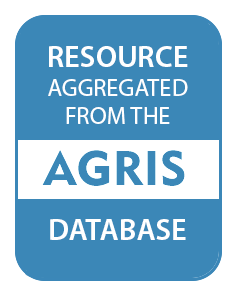Location
CABI (Centre for Agriculture and Biosciences International) is an international not-for-profit organization that improves people’s lives worldwide by providing information and applying scientific expertise to solve problems in agriculture and the environment.
Our approach involves putting information, skills and tools into people's hands. CABI's 48 member countries guide and influence our work which is delivered by scientific staff based in our global network of centres.
CABI's mission is to improve people's lives worldwide by providing information and applying expertise to solve problems in agriculture and the environment.
We achieve our mission by:
- Creating, managing, curating and disseminating information
- Putting know-how in people's hands
- Improving food security through climate smart agriculture and good agricultural practices
- Helping farmers to trade more of what they sow
- Supporting farmers by increasing their capacity to grow better quality crops, and fight pests and diseases
- Bringing science from the lab to the field
- Protecting livelihoods and biodiversity from invasive species and other threats
- Combating threats to agriculture and the environment
We are committed to playing our part in helping the world reach Sustainable Development Goals. Here we outline areas of focus where we believe we can make significant contributions to improving lives across the globe.
Members:
Resources
Displaying 11 - 15 of 71Soil degradation in environmentally sensitive areas driven by urbanization: an example from Southeast Europe
Rapid urbanization together with policy ineffectiveness in controlling urban growth is often associated to soil and land degradation in both the developing and developed world. The present study analyses the relationship between urban expansion and soil degradation in an arid Mediterranean region (Attica, Greece) where the compact settlement pattern has been replaced by low‐density urban development. The study area is one of the most densely populated areas in the Mediterranean basin that has experienced an impressive growth in population during the last 60� yr.
Sugar beet (Beta vulgaris L.) response to diammonium phosphate and potassium sulphate under saline–sodic conditions
Salinity and sodicity are prime threats to land resources resulting in huge economic and associated social consequences in several countries. Nutrient deficiencies reduce crop productivity in salt‐affected regions. Soil fertility has not been sustainably managed in salt‐affected arid regions. Few researchers investigated the crop responses to phosphorus and potassium interactions especially in saline–sodic soils.
Assisting nonsoil specialists to identify soil types for land management: an approach using a soil identification key and toposequence models
Conventional soil survey information is often unclear except to specialists. An approach using soil toposequences and a soil identification key was used to aid the translation of soil survey information into a form suitable for a nonspecialist audience with a case study from Brunei. Soil Taxonomy was used to characterize the major soil types; however, to assist end users, a complementary special‐purpose soil classification system was developed in the form of a soil identification key using plain language terms in English that were also translated into Malay.
Multiple social and environmental benefits of poplars and willows - Mini Review.CAB Reviews
Poplars and willows provide society with ecosystem services. These include direct economic benefits such as wood, fibre, fuelwood and other forest products. They also include environmental benefits improving the lives of people, such as through rehabilitation of degraded land, restoration of forest landscapes and mitigation of climate change. All of these services support rural livelihoods, enhance food security, alleviate poverty and contribute to sustainable land use and rural development, particularly in developing countries.


